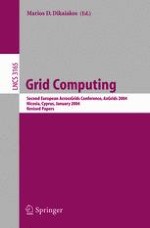2004 | Buch
Grid Computing
Second European AcrossGrids Conference, AxGrids 2004, Nicosia, Cyprus, January 28-30, 2004. Revised Papers
herausgegeben von: Marios D. Dikaiakos
Verlag: Springer Berlin Heidelberg
Buchreihe : Lecture Notes in Computer Science
Enthalten in: Professional Book Archive
